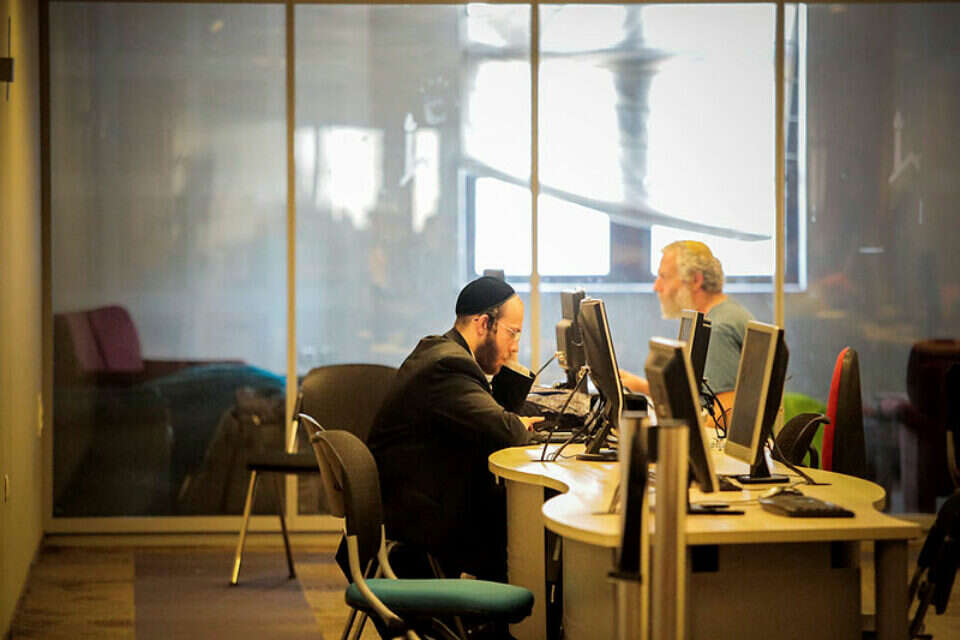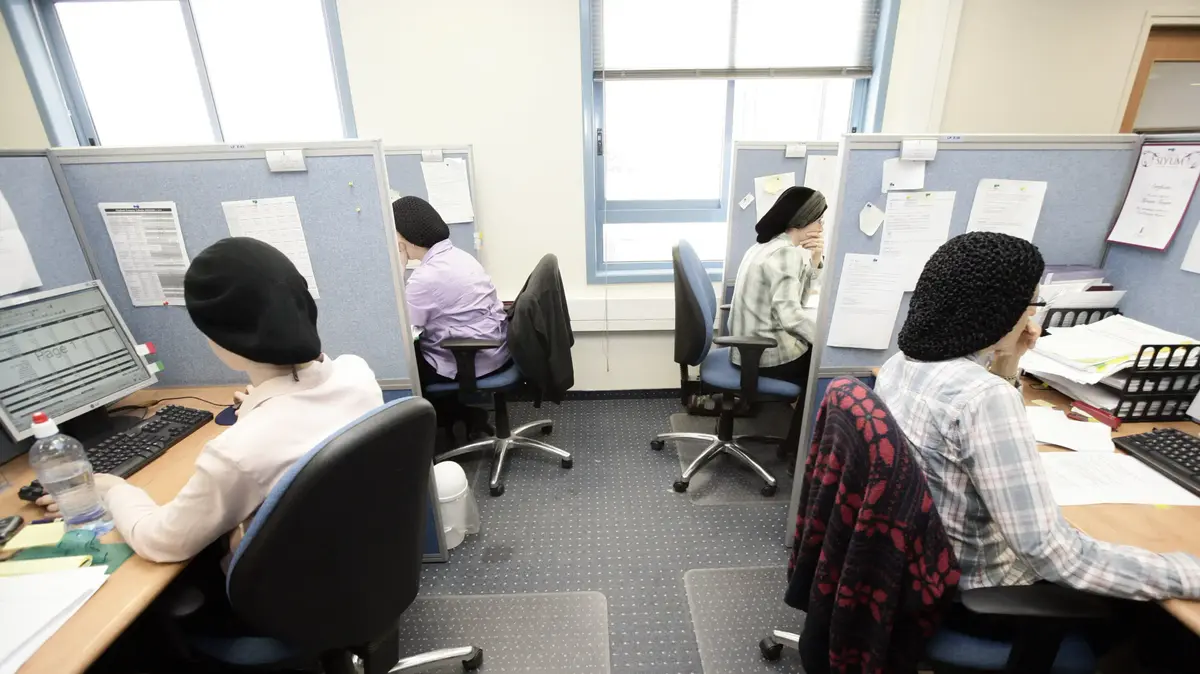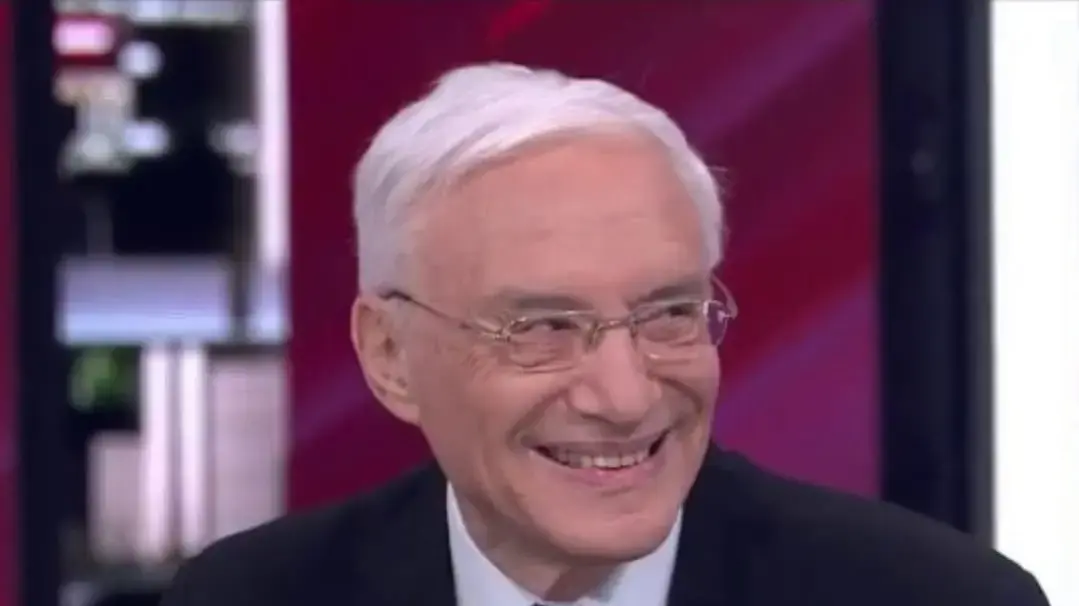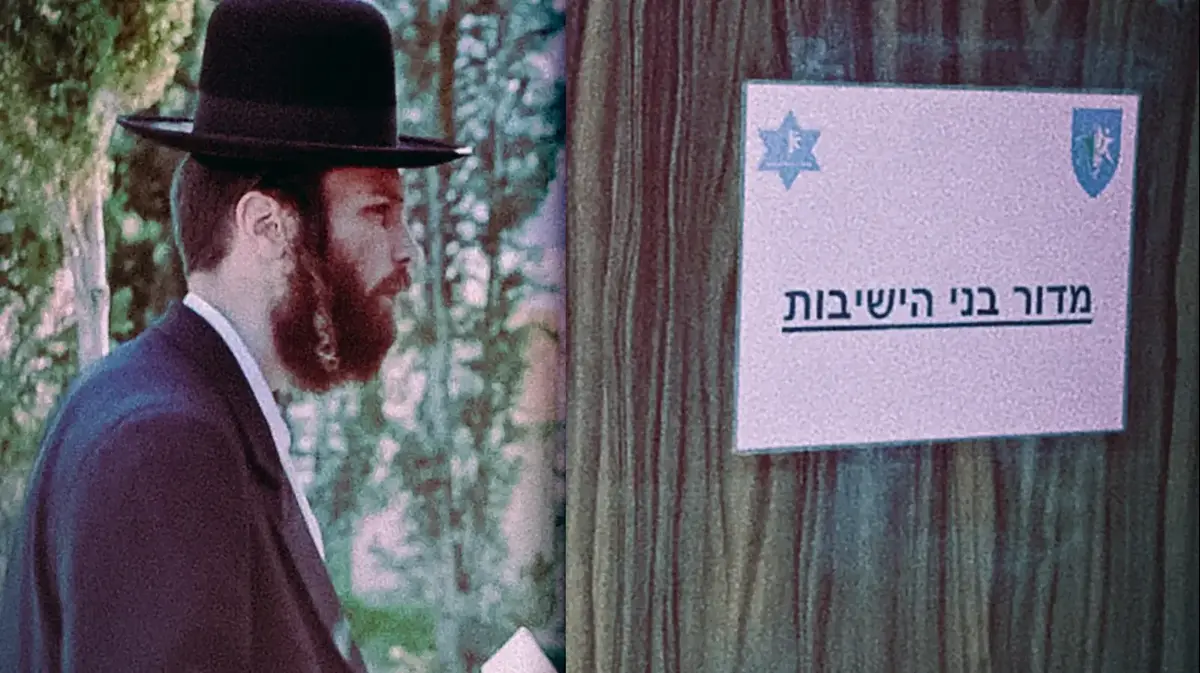The Haredi Society Yearbook of the Israel Democracy Institute for 2021, published for the sixth year in a row, reviews the changes that have taken place in the Haredi society in recent decades in various fields, including education, employment, and lifestyle.
According to the findings, in 2020/21) about 14,700 ultra-Orthodox students studied in institutions of higher education, constituting 4.5% of all students in Israel. When the increase among ultra-Orthodox men was slightly greater than among ultra-Orthodox women, a significant part of the increase in the number of students, which was also recorded in the general public (5.5%), can be attributed to the corona plague, and in the coming years we will see a change.
Composition of students: 67.5% of ultra-Orthodox students are women, while about 12,100 of ultra-Orthodox students (82%) studied for a bachelor's degree, and about 2,600 studied for graduate degrees, the vast majority for a master's degree.
A large majority of ultra-Orthodox undergraduate students studied in 2019/20) in academic colleges (45%) and colleges of education (24%), and only a minority in the Open University (20%) and other universities (11%).
Occupation
Large differences between ultra-Orthodox workers and non-ultra-Orthodox Jewish workers in 2020: There is no noticeable trend of rapprochement between the industries in which ultra-Orthodox men are employed and the industries of the entire Jewish population, however, there is a noticeable rapprochement among ultra-Orthodox women.
A special segmentation of the high-tech industry shows that only 3% of ultra-Orthodox men were involved, compared with 14% of non-ultra-Orthodox Jewish men.
Among ultra-Orthodox women, the gap is small, 5% compared to 7% of non-ultra-Orthodox Jewish women.
The proportion of ultra-Orthodox women engaged in high-tech has doubled between the years 2020-2014 (from 2.7% to 5%).
Among ultra-Orthodox men, close to a third (29%) were employed in education, compared with a few percent of non-ultra-Orthodox Jewish men (5%).
Only 3% of ultra-Orthodox men were engaged in public administration and security, compared with 13% among non-ultra-Orthodox Jewish men.
Employment Fair for Haredi Women (Archive), Photo: Lior Mizrahi
Among ultra-Orthodox women, 39% were employed in education compared to 17% of non-ultra-Orthodox Jews.
The reason for this is first and foremost the large number of children in the ultra-Orthodox population, and the convenient working hours and the possibility of working within the community.
23% were employed in the field of health, welfare and welfare services (compared with 19% among non-Haredi Jewish women);
Only 3% in the field of public administration and security - compared to 10% of Jewish facts;
And so in the field of trade, only 5% were employed in it compared to 10% of the non-Haredi Jewish facts.
Use of the Internet
The ultra-Orthodox's exposure to the Internet reached almost two-thirds (64%) in 2020, compared with only 28% in 2008, however, it is still low compared to non-ultra-Orthodox Jews (93%).
The ultra-Orthodox also differ in the way they connect to the network, and tend to connect mainly via the home computer (42%), rather than via the mobile phone (30%).
Even when they have access to the Internet by both means, most of them will prefer to connect from a computer (62%) - compared to non-Haredi Jews whose main use is via cell phone (72%).
Means of use: 61% of the ultra-Orthodox report that they have a computer at home, compared to 88% among the non-ultra-Orthodox Jews.
The ultra-Orthodox who own a computer use most of the functions of the computer less than the non-ultra-Orthodox.
Patterns of use: How ultra-Orthodox use the Internet tends to be more functional than social, and what is their main use?
In first place, e-mail (88%), followed by information retrieval (73%), digital banking (62%), for work purposes (58%) and receiving services from government ministries (56%).
These rates of use are similar to those of non-Haredi Jews, but data search data are still lower than among non-Haredi Jews (94%), and only a little over a third (36%) pay bills and shop online, compared to more than half (53%) of non-Haredi Jews. -religious.
The use of the Internet for social purposes is less common among ultra-Orthodox users, but no less than half of the ultra-Orthodox who surf the Internet use social networks.
Less than half (46%) use WhatsApp, and only 10% use the Internet for gaming purposes.
Approved cell phone Committee of Haredi Religious Rabbis, Photo: Maya Baumel
Network safety
Haredim who surf the net report less vulnerability: 14% were harmed by online crime and about a quarter (23%) were exposed to offensive content (compared with 24% and 37% among non-Haredim, respectively).
One possible explanation is the relatively limited use of ultra-Orthodox on social networks.
At the same time, ultra-Orthodox make less use of online protection measures: 59% use protection software and almost half (48%) report changing passwords in the year prior to the survey, compared to 64% among non-ultra-Orthodox who take these actions.
Internet use of children and youth
The proportion of children and youth (under the age of 18) who use the Internet is only 13% among ultra-Orthodox respondents - much lower compared to non-ultra-Orthodox Jews (75%).
Haredi parents restrict their children's access to the network more than non-Haredi Jewish parents (88% vs. 57% respectively), as well as the time of use (76% vs. 62% respectively).
The editors of the Haredi yearbook, Dr. Gilad Malach and Dr. Lee Kahner, note that: "The Haredi population constitutes about one-eighth of the country's population and continues to grow at a rapid rate, albeit lower than before. The result is noticeable in the labor market, with the employment rate of ultra-Orthodox women continuing to rise compared to that of men.The income of ultra-Orthodox women is also closer to the income of non-ultra-Orthodox Jewish women, compared to lower income of ultra-Orthodox men compared to non-ultra-Orthodox Jewish men. "The ultra-Orthodox men compared to the ultra-Orthodox women during the Corona period emphasized how low the employment resilience of ultra-Orthodox men is.
Were we wrong?
Fixed!
If you found an error in the article, we'll be happy for you to share it with us














